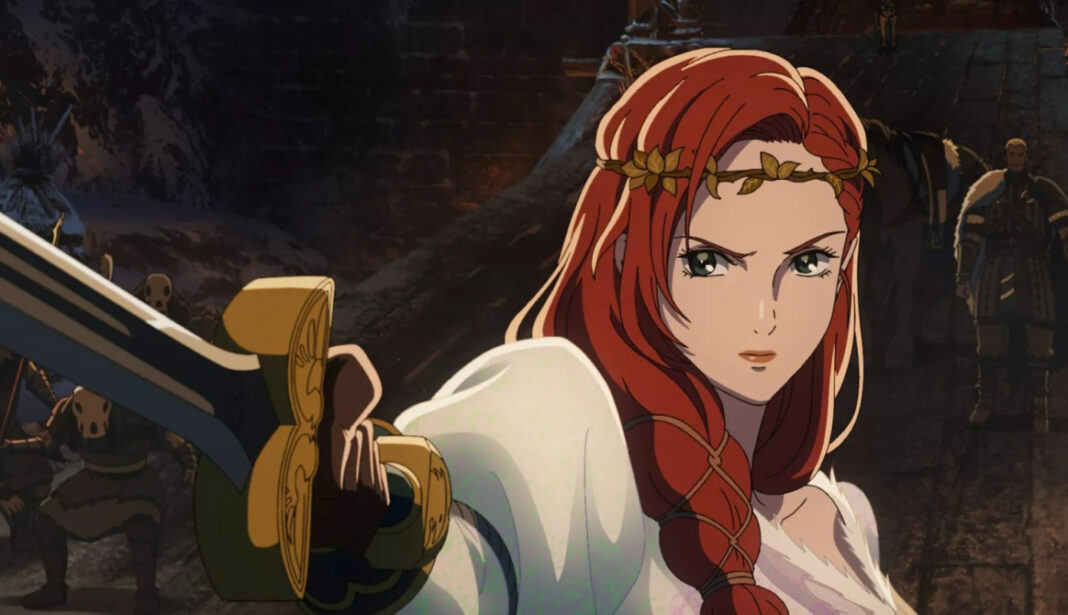The Lord of the Rings: The War of the Rohirrim is an animated epic that dives into the rich lore of Middle-earth, blending breathtaking visuals with a compelling narrative. However, does this film truly capture the magic of Tolkien’s universe? Let’s explore.
The Story So Far
In the heart of Rohan, the legendary King Helm Hammerhand faces a dire threat from Wulf, a cunning Dunlending lord who seeks vengeance for his father’s death. As Wulf targets Helm’s kingdom, the people of Rohan must muster their courage and strength to defend their land from a looming invasion. Amidst the chaos, Helm’s daughter, Hera, emerges as a fierce spirit eager to protect her home, even as her father insists on keeping her safe. This tale of war, loyalty, and empowerment unfolds against the backdrop of the iconic Hornburg, setting the stage for a battle that will echo through the ages.
Full Review
Aesthetic Appeal
From the moment the film begins, viewers are treated to a visual feast. The hand-drawn animation beautifully marries the styles of Western high fantasy and Japanese anime, presenting a striking aesthetic that captures the grandeur and mythology of Middle-earth. Director Kenji Kamiyama brings a unique artistic vision that, while visually stunning, sometimes feels at odds with the weight of the narrative.
Character Depth and Development
While the film attempts to introduce us to a host of characters, the screenplay—penned by a team that includes Jeffrey Addiss and Will Matthews—struggles to provide meaningful depth. Hera, voiced by Gaia Wise, emerges as a potential standout with her wild spirit and connection to nature. Yet, her character is often sidelined by the film’s focus on action sequences and war tactics, leaving her motivations feeling underexplored. The relationship dynamics, particularly between Hera and Helm, are ripe with potential but ultimately fall short, reducing complex emotions to mere plot devices.
Action vs. Emotion
The narrative is heavily driven by action, which, while thrilling at times, detracts from character development. The battles are visually impressive but often lack emotional weight due to the thinly sketched characters. Even the fierce confrontations fail to resonate deeply, as the film rushes from one skirmish to the next, leaving little room for reflective moments. The potential for a rich, character-driven story is overshadowed by a relentless focus on spectacle.
Musical Composition
The film’s score, crafted by Stephen Gallagher, complements the visuals but fails to leave a lasting impact. The inclusion of legacy pieces from Howard Shore brings a nostalgic touch, reminding audiences of the emotional depth found in previous adaptations. However, the overall musical experience feels flat, lacking the orchestral grandeur that has characterized previous entries in the franchise.
Thematic Elements and Messaging
Thematically, The Lord of the Rings: The War of the Rohirrim touches on issues of empowerment and leadership, particularly through Hera’s journey. However, the execution of these themes often feels clichéd, resembling a generic fantasy narrative more than a unique addition to Tolkien’s legacy. The film’s ambition to blend political intrigue with personal growth is commendable, yet the storytelling often falters, leaving viewers with a sense of missed opportunity.
Production and Pacing
Reportedly fast-tracked into production to retain cinematic rights, the film carries a sense of haste that is palpable throughout. The pacing is uneven, with some scenes dragging while others rush to the climax. The final act, while filled with action, feels like a culmination of predictable plot points rather than a satisfying resolution to the characters’ arcs.
Conclusion
In summary, The Lord of the Rings: The War of the Rohirrim offers a dazzling visual experience wrapped in a narrative that struggles to find its footing. While it introduces intriguing concepts and characters, the execution leaves much to be desired. Fans of Tolkien’s universe may find moments of enjoyment, but the film ultimately feels like a missed opportunity to explore the richness of its source material. As we look ahead, one can only hope for a future installment that fully embraces the depth and complexity that the world of Middle-earth deserves.
Frequently Asked Questions
1. What is the release date for The Lord of the Rings: The War of the Rohirrim?
The film is set to be released in 2024.
2. Who directed The War of the Rohirrim?
Kenji Kamiyama directed the film.
3. What animation style is used in the film?
The film features a blend of Western high fantasy and Japanese anime styles.
4. Who are the main voice actors in the movie?
Notable voice talents include Brian Cox, Gaia Wise, and Luke Pasqualino.
5. Is this film connected to the original Lord of the Rings trilogy?
Yes, it explores the lore within the same universe but focuses on a different story.
6. What themes are explored in The War of the Rohirrim?
The film touches on themes of empowerment, leadership, and the consequences of war.
7. How does the film’s action compare to its character development?
The action is prominent, but character development is often sidelined, leading to thinly drawn characters.
8. What is the film’s overall tone?
The film blends serious themes with adventurous action but struggles to balance the two effectively.
9. Are there any notable musical pieces in the film?
Yes, the film features some legacy pieces from Howard Shore, which add a nostalgic touch.
10. Will there be more films in this series?
As of now, there are no confirmed plans for additional films, but the future remains open.
Tags: Lord of the Rings, animated film, Rohirrim, Kenji Kamiyama, Gaia Wise, Brian Cox, Tolkien, film review, movie review, fantasy film

